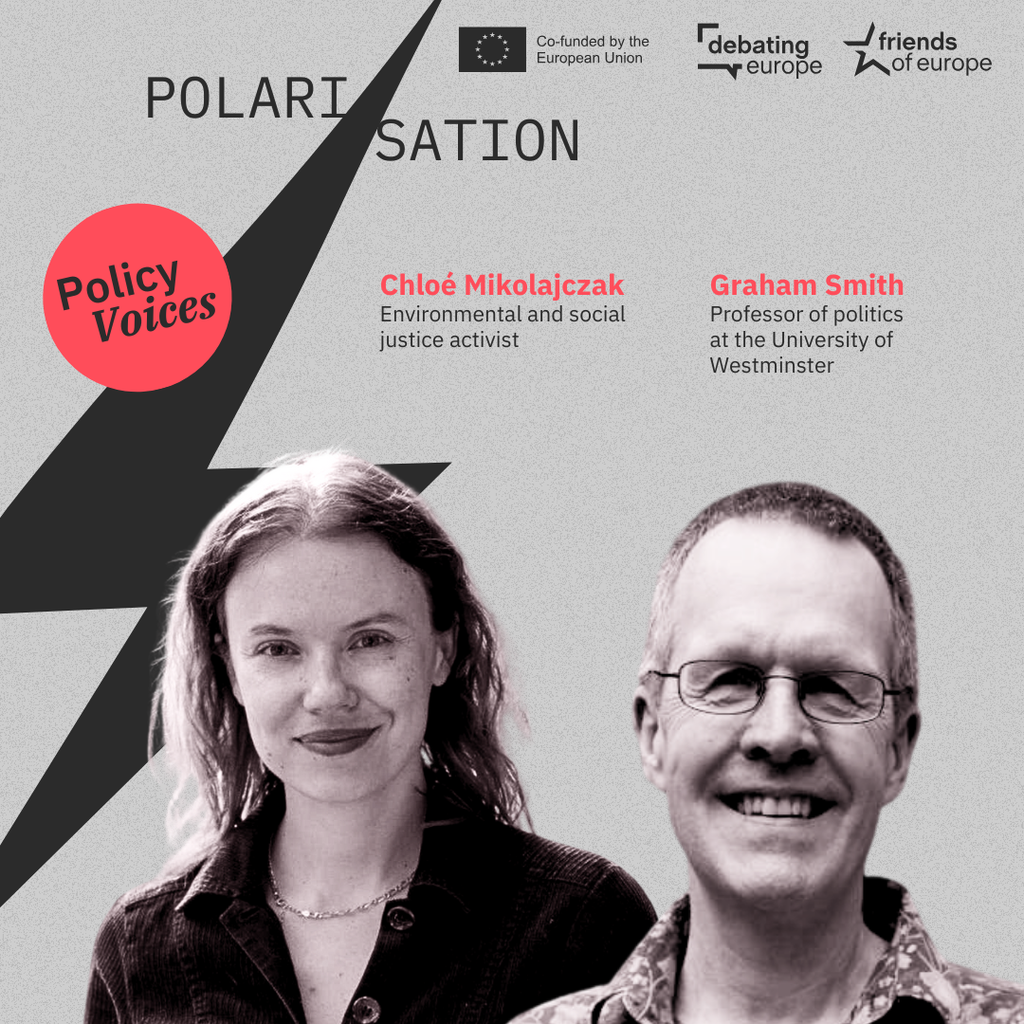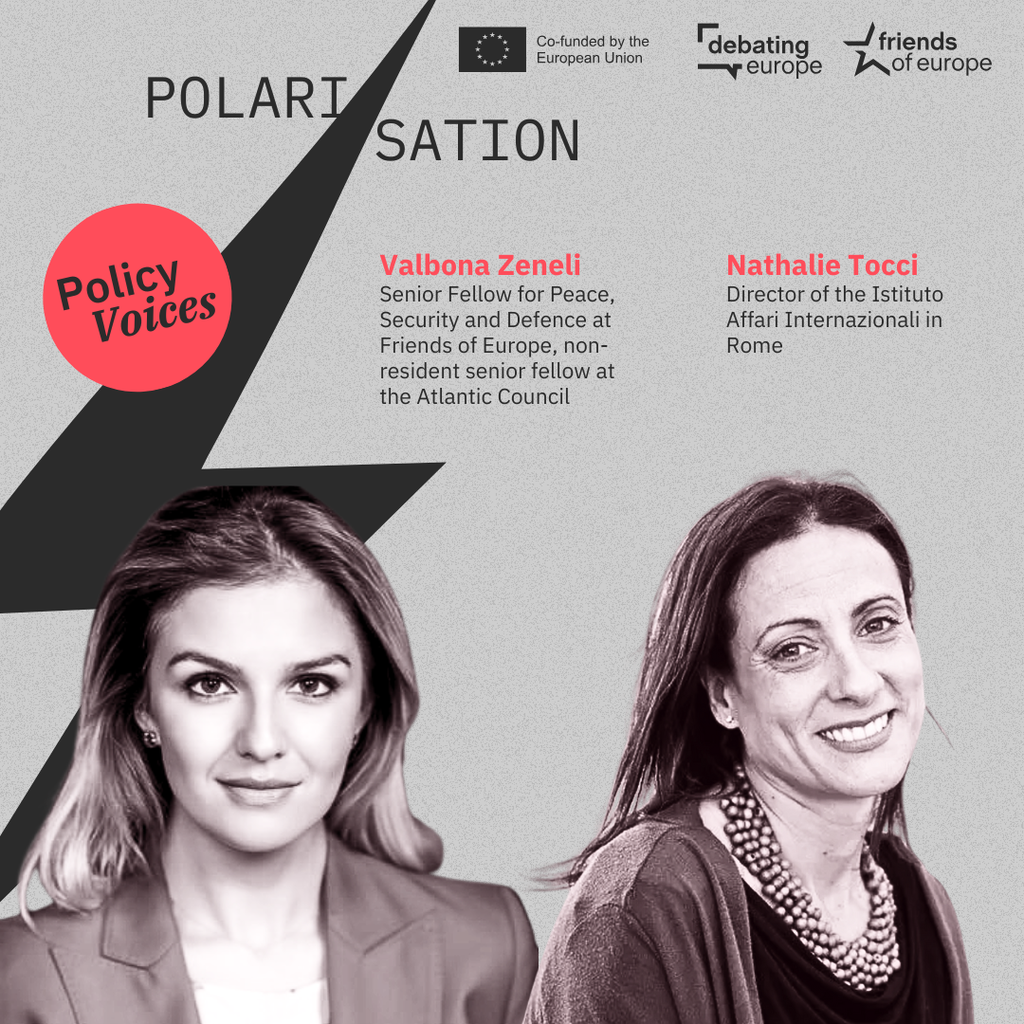From ambition to action: building Europe’s Defence Union
Past event In person

- Area of Expertise
- Peace, Security & Defence
Peace, Security & Defence

Senior Fellow for Peace, Security and Defence at Friends of Europe, and former Deputy Assistant Secretary General for Emerging Security Challenges at the North Atlantic Treaty Organization (NATO)
Rudiger Dornbusch, a guru of modern management and celebrated professor at MIT, once formulated the classic definition of a crisis. He wrote that “crises take longer to arrive than you can possibly imagine; but when they do come, they happen faster than you can possibly imagine”. This certainly seems to be the case with the impact that climate change is having on human security and economic prosperity around the globe.
The speed and consequences of global warming are not a new topic. They have been discussed since the 1980s, and books warning us of the impending catastrophe have been on the bestseller list since that time. I remember reading Jonathan Schell’s Fate of the Earth when I was starting graduate school. It was the first of hundreds more and thousands of reports on greenhouse gas emissions from the burning of fossil fuels published by governments, international organisations and the scientific and academic community. The upcoming COP international meeting in Glasgow will already be number 26 in the series and the UN Inter-Governmental Panel on Climate Change (representing the sum total of expertise and research in this domain) has been going since 1988.
Yet here is the paradox. During the decades when the reality and relentless onward march of climate change were receiving more and more attention, the problem has been progressively getting worse. There has been a disconnect between the intellectual or knowledge revolution and our industrial, economic and societal practices. For instance, 50% of carbon emissions in the atmosphere today were put there since the 1990s. In 1965 the number of parts per million (ppm) of carbon particles in the atmosphere was 320, only 40 more than two centuries before. Yet it took only 30 years after 1965 to add 40 ppm more and only 2 years thereafter to add another 40ppm.
The legacy of the 20th century during which the global population doubled twice and GDP more than quadrupled continues to weigh heavily upon us in terms of the depletion of natural resources and the disruption to the natural cycle of the planet. Yet climate change seemed to be a problem for the long term and always for the future, to be tackled after more immediate crises and challenges were dealt with. It seemed to be a severe problem only for some parts of the world leaving the rest of us unaffected; and when an extreme weather event did hit us (such as a major flood, fire or hurricane) it was difficult to prove that this was something new and caused primarily by climate change. Little did we recognise that postponing coherent action at both the national and international levels would only reduce our options and make the remaining ones more costly, more risky and less effective.
2020 seems to be marking the transition from the slow to the fast phase of the climate crisis
Yet just as the first stage of a crisis happens too slowly to be noticed and appreciated, lulling us into a false sense of security that we are able to manage the issue and still have time to tackle it, so the second accelerating phase leaves us scrambling to respond and to catch up. In this respect, 2020 seems to be marking the transition from the slow to the fast phase of the climate crisis. Future historians may even put COVID-19 into second place for significance behind it, whatever the current news agenda might suggest. The planet has been telling us it has had enough. We have witnessed – and an increasing number of us directly experienced – massive forest fires in Siberia, Australia, California and the Amazon, back to back hurricanes, unprecedented temperature levels (Death Valley in California recorded 54.4°C last July), widespread flooding and droughts leading to poor grain harvests and livestock feeds. The Arctic ice pack has just dipped below 40 million square kilometres for the first time after the second warmest summer on record.
Trotsky once said: ”you may not like war, but war likes you” and the same could now be said of climate change. The Institute for Economics and Peace has found that 141 countries are suffering from at least one kind of ecological threat. Only 9 countries currently have escaped major climate-related incidents in recent times. There is also a correlation between climate stress and being in a conflict zone. Climate change may not be a first-order cause of conflict but there is growing evidence that it produces second and third-order effects as food and water availability reduces and people need to move.
Conflicts, in turn, impact on the environment and hinder the governance, resilience-building projects and resource allocations that are needed to deal with it. It is truly a vicious circle. President Putin once jibed that climate change would be good for Russia as its citizens would no longer need to buy fur coats and hats; but as record temperatures in the Siberian tundra melt the permafrost and release vast quantities of methane gas into the atmosphere, incapacitating Russian pipelines on the way, he must also recognise that the losers of climate change vastly outnumber the winners.
The security and defence community has long identified the principal challenges resulting from climate change. Extreme weather events that happened only once in a decade now occur every other year. Forest fires on a massive scale can suddenly be followed by torrential rains and flooding, as happened in Australia recently. Chicago can experience a polar vortex while people bake in Sydney. The weather gyrates more unpredictably and the costs of cleaning up the damage spiral. Between 2010 and 2019, natural disasters cost the world approximately $2.98 trillion, making this the costliest decade on record.
The countries that will suffer most from global warming have done the least to cause it
In the first half of 2019 extreme weather displaced 7 million people setting a new mid-year high. At the moment when the EU has just come out with a new policy on migration it is sobering to note that up to 1.2 billion people could be displaced in the next 30 years through climate change worsening already precarious living conditions resulting from poor governance, inequitable land ownership, resource depletion and food and water scarcity. Whereas the great majority of displaced people stay within their country or region, these climate refugees will increasingly move internationally.
A 1°C rise in global warming is sufficient to reduce rice yields in south-east Asia by 10% and deplete freshwater aquifers by up to 60% by mid-century. There is no shortage of other alarming statistics to indicate that, whether it is a first, second or third order driver of human insecurity, climate change will act as a force multiplier accelerating the speed at which factors such as demographics, sea levels, water, food and economic sustainability inter-act and clash, pushing fragile communities and states over the edge. It has been estimated that between 3 and 20% of armed conflicts in the past 100 years have been influenced by climate or environmental factors. These percentages seem set to grow in the 21st century. We have witnessed already how drought in Afghanistan can fuel the heroin trade and how driving people off the land into overcrowded cities in Syria can foster extremism and radicalisation
So it is not just the frequency of extreme weather events but also the underlying and long term trends reshaping the geopolitical map of the world that is preoccupying the security and defence community. Climate change Is now irreversible even if some of its worse impacts (at degrees above 2°C) can still be avoided. It will lead to a different configuration of challenges as states increasingly feel negatively impacted through the perceived irresponsible behaviour of others. Disputes over the “Wuhan virus” or the sharing of the water of the Nile after Ethiopia’s construction of its Great Renaissance Dam are but a foretaste of this.
It is further reflected in the fact that the countries that will suffer most from global warming have done the least to cause it and expect the polluters to fix the problem. Consequently, climate change will not just produce more human insecurity at the grassroots but also more diplomatic tensions and disputes among states. This makes it now urgent for the armed forces in Western democracies and the security and defence community more broadly to define their role and added value. What can this be?
The military has a vested interest in keeping global warming to 1.5°C over pre-industrial levels
In the first place, to be leading advocates for the rapid greening of our economies and for more ambitious CO2 reduction targets down to net zero in the industrialised countries by the middle century. The US withdrawal from the Paris Agreement and the postponement of the COP 26 have not augured well for further mitigation and national binding commitments in this field; but the military has a vested interest in keeping global warming to 1.5°C over pre-industrial levels. Because the higher it goes above that level the more they will have to deal with the consequences and use up their budgets and capabilities in the process.
Next the armed forces need to prepare for more involvement in homeland operations to assist disaster relief and rescue efforts. Their role during COVID-19 in building field hospitals, running testing centres, patrolling lockdowns and transporting patients is indicative of this greater role in supporting the civilian authorities. At the same time the armed forces can be in the forefront of humanitarian relief operations. In Australia the navy lifted stranded homeowners off beaches. In Haiti and the Philippines the US army and marines built emergency shelters and delivered food and medicine. In the Caribbean British, French and Dutch commandos restored power lines, dealt with convicts escaping from destroyed prison buildings and helped the police to prevent looting and restore order.
We are likely to see more of this in the years ahead and the armed forces need to incorporate this into operational planning, training and exercises, learning lessons from each other’s missions along the way. Climate change will also have implications for equipment which needs to operate in dust storms, or warmer oceans or river deltas and flooded urban environments. It may be useful to store equipment and supplies in areas of the world prone and vulnerable to natural disasters. The military also needs to ensure that their own ports, airfields and supply chains cannot be put out of action by extreme weather as has actually happened to some US facilities in recent times.
Third the intelligence community and the armed forces have a key role to play in strategic forecasting and climate mapping. This requires highly advanced data collection and processing capabilities and the ability to see the inter-connections of a vast number of different elements (human, political and environmental) and establish on that basis good risk assessment models. Satellites can monitor the evolution of the earth’s climate, such as desertification, rivers and water basins, sea-level rise and the extent of change to rain forests and the polar ice packs. This forecasting data can be used to produce predictive scenarios and an early warning watch list of potential crisis situations tipping into violence or disorder. It is not that the military has a monopoly of good research and analysis; it is just that they have the capacity to crunch it all together and come out with a composite trend-based and predictive result. Consequently the role and impact of climate change can be more accurately factored in to threat assessments and contingency plans.
Just 12 countries produce over 70% of global CO2 emissions
Fourth comes the building of partnerships for climate resilience. The armed forces are deeply involved in defence capacity building in many countries of the world, in Africa and the Middle East for instance, that are in the grip of climate change. These activities can be more geared to helping the partner countries to increase their resilience through vulnerability assessment and risk modelling and improving their domestic capabilities for analysis and early warning. One improvement would be earlier deployment of aid and forces to improve resilience before an extreme weather event rather than afterwards. For example, by disbursing grants and aid, evacuating people, setting up emergency hospitals and shelters or securing roads and transport links. A dollar or euro spent on prevention is worth 10 in post-incident recovery. In many cases (Puerto Rico is a good illustration) a country or region is not able to recover before the next big storm hits, so they move backwards rather than forwards. Again the military with their authority to command political and public attention can make the case that international assistance needs to move more towards anticipation and preventive measures.
Finally geo-engineering. Just 12 countries produce over 70% of global CO2 emissions. They are among the largest and most powerful countries. If climate change accelerates up to 4 or 5°C over pre-industrial levels and we begin to confront some potentially catastrophic outcomes these countries may think they have the technology and the muscle power to carry out geo-engineering according their narrow perceptions of national interest. They could try to divert the course of rivers, pump aerosols into the atmosphere or block the rays of the sun.
However, without a proper risk assessment these techniques could be potentially dangerous and negatively impact on neighbouring states. Western militaries could look into the issue to define a risk methodology and an international framework to enhance transparency on geo-engineering according to the precautionary principle. Moreover it will be important to build partnerships between the military forces of the West and countries such as China, Russia, India and Brazil that could be involved in future geo-engineering projects to integrate them into a rules-based, multilateral approach. The fact that this is difficult doesn’t make it less necessary.
In sum, the security and defence community has a key role to play in both mitigating and adapting to climate change. Yet at a time when it is already heavily focused on peer to peer high tech warfare, counter-terrorism or illegal migration, the question is: will it have the time and inclination to play that role?
Past event In person

Next event In person & Livestreamed

Past event Online

Past event Online





Stay informed
We use cookies and similar technologies to adjust your preferences, analyze traffic and measure the effectiveness of our campaigns. Learn more about our privacy policy.